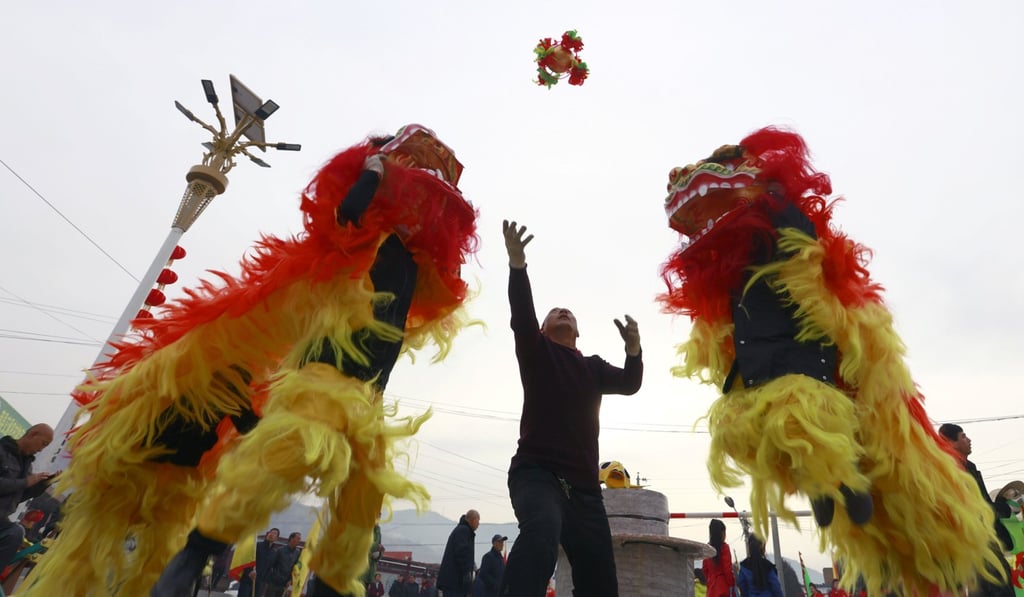The lopsided fortunes of China’s ancient lion dance: thriving in the south but struggling in the north
- Public’s interest in the ancient art spiked when video of two performers working on routines went viral on social media
- A focus on family and heritage is driving its preservation in southern China

When the sounds of a drum, cymbals and gongs pierce the air in Foshan, a city in southeast China, local children know the lion dancers are performing.
Excitedly, they flood into the streets to catch a glimpse of the performers in the lion costume wagging the lion’s head and tail and climbing up and down poles as high as 20 metres (60 feet).
Li Zhihao was one of these children some 20 years ago. For as long as he could remember, the lion dance had been a part of life in the city in Guangdong province.
“Whenever people celebrated holidays, or when new businesses opened, lion dancing troupes were hired to perform on the streets,” said Li, a coach and performer with the Wong Fei-hung Lion Dance team in Foshan.

But while performances of this traditional art can be viewed during Lunar New Year and other Chinese cultural and religious festivals, the exuberance it inspires in Foshan and other southern cities is not shared to the north. The tradition tends to be better preserved in southern China because of the region’s strong focus on family and heritage.
Local governments and grass roots groups have launched efforts to revive the tradition in recent years.
